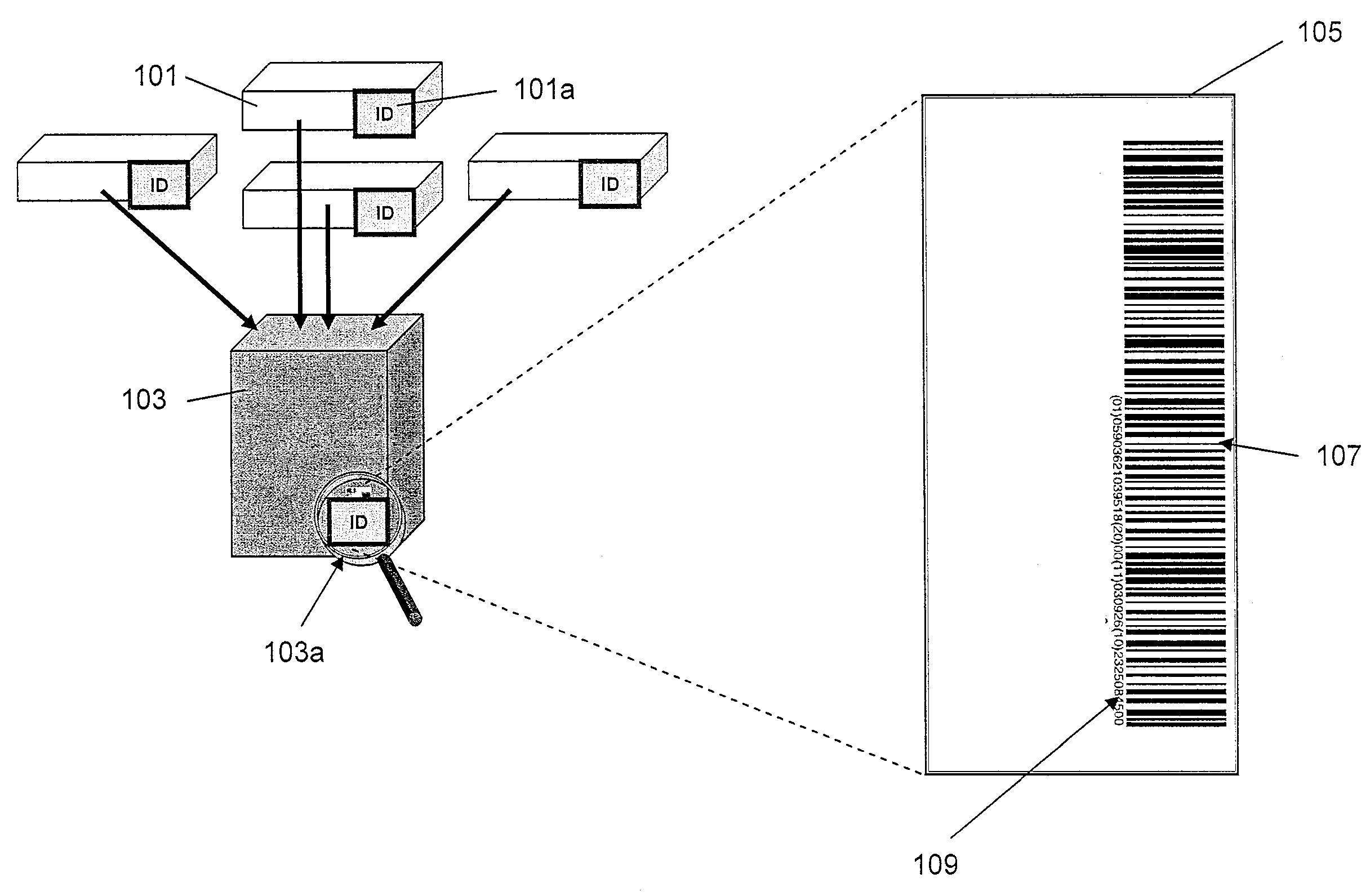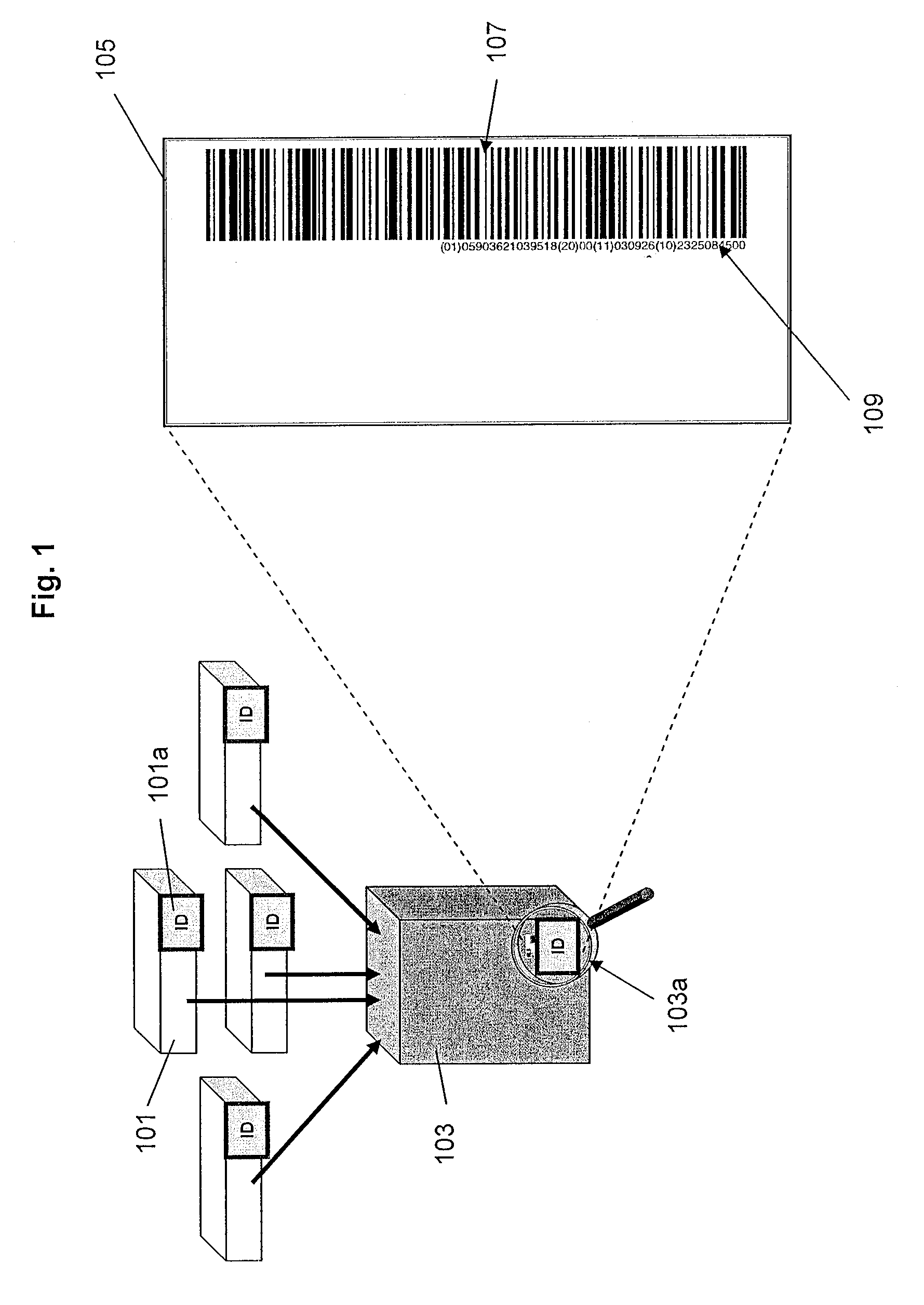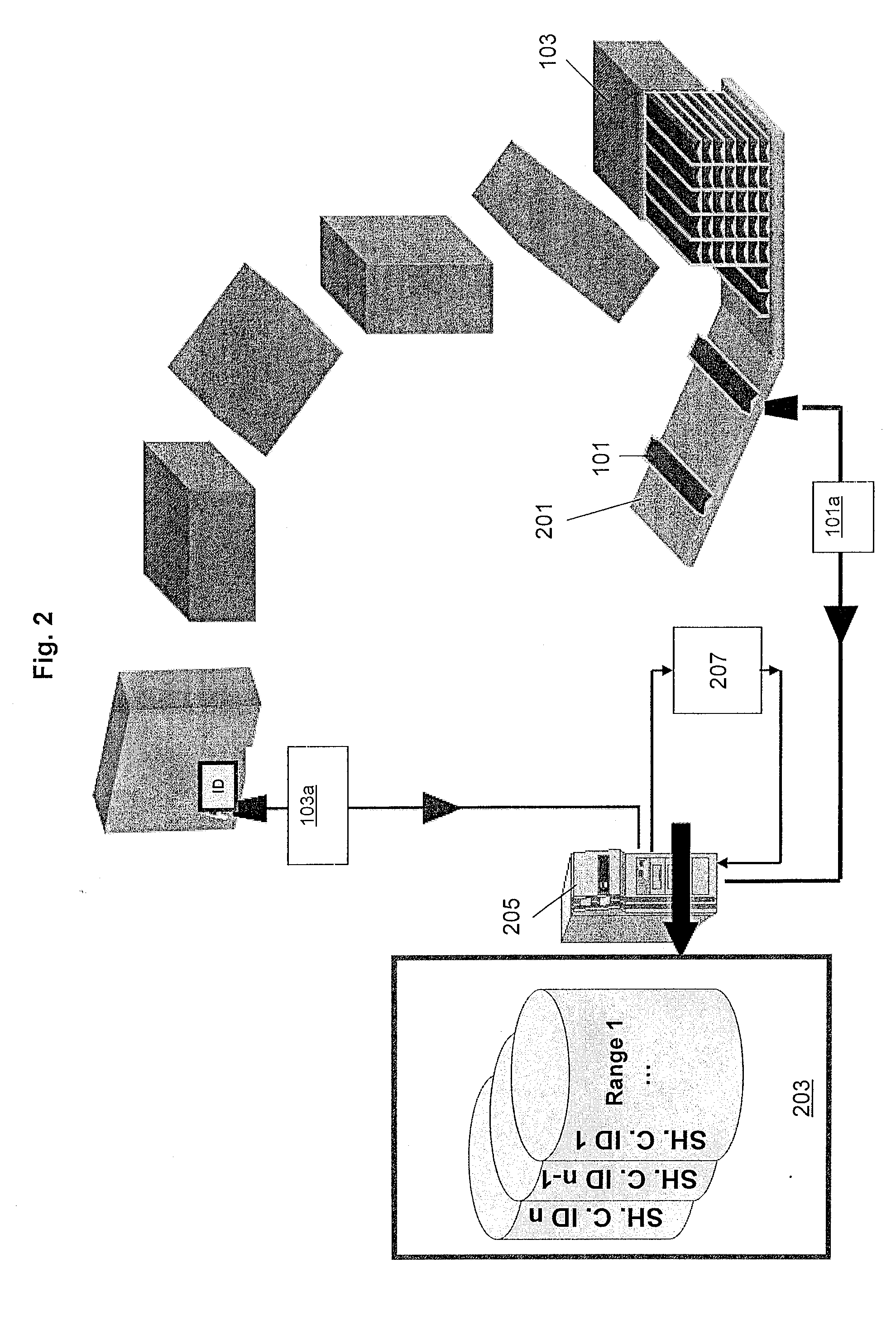Method and apparatus for identifying, authenticating, tracking and tracing manufactured items
- Summary
- Abstract
- Description
- Claims
- Application Information
AI Technical Summary
Benefits of technology
Problems solved by technology
Method used
Image
Examples
example 2
[0073]Example 2, illustrated schematically in FIG. 4, is an example in which the cartons exiting the production line are mixed up before being packed into a shipping case. Carton identifiers are applied at 401 and read at 403. The cartons are mixed at 405. This means that cartons having consecutive carton identifiers are not packed into the shipping case consecutively. This is a realistic example, since individual cartons may well be removed for quality checks, and buffers, which reorder the cartons, may be provided between production lines and packing or between stages in the production line.
[0074]Within the context of this example, the case when 50 cartons are packed into a shipping case is now discussed. In many situations, no change to the ranges will be required. For example, for four cartons 1, 2, 3 and 4, if cartons 2 and 3 are swapped, the original range will still be valid, because cartons 1 to 4 will still all be included in the shipping case. However, if cartons are remov...
example 3
[0076]Example 3, illustrated schematically in FIG. 5, is an example in which a shipping case contains cartons from two separate production lines, A and B. Carton identifiers are applied at 501A and 501B, for production lines A and B respectively, and read at 503. Without any mixing, this will require the shipping case to reference at least two ranges: one from production line A and one from production line B. Even with maximum mixing, the shipping case will only need to reference a maximum of 50 ranges as in Example 2.
[0077]Referring to the storage requirements discussed above, if the shipping case references a range from Production Line A and a range from Production Line B, this will require 32 bytes of storage. On the other hand, if the shipping case reference 50 ranges, some from Production Line A and some from Production Line B, this will required 800 bytes of storage, still less than prior art requirements. In practice, the amount of storage will be somewhere between these two ...
PUM
 Login to View More
Login to View More Abstract
Description
Claims
Application Information
 Login to View More
Login to View More - R&D
- Intellectual Property
- Life Sciences
- Materials
- Tech Scout
- Unparalleled Data Quality
- Higher Quality Content
- 60% Fewer Hallucinations
Browse by: Latest US Patents, China's latest patents, Technical Efficacy Thesaurus, Application Domain, Technology Topic, Popular Technical Reports.
© 2025 PatSnap. All rights reserved.Legal|Privacy policy|Modern Slavery Act Transparency Statement|Sitemap|About US| Contact US: help@patsnap.com



